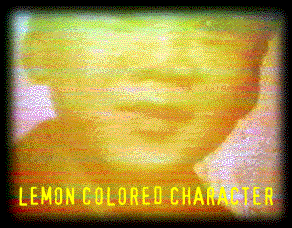







On February 19, 1942, President Franklin D. Roosevelt signed Executive Order 9066, which authorized the military to exclude any person(s) from military areas without trial or hearings. The signing of Executive Order 9102 soon followed and established the War Relocation Authority which administered the evacuation of over 120,000 Japanese Americans from the Pacific Coast. These individuals, two-thirds of them U.S. citizens, were sent to ten concentration camps built in desolate areas throughout the western interior of the United States.*

Imagine being singled out by your ethnicity. Being told that you would have to leave your home on the west coast in three days taking only what you could carry in two bags. Imagine having to liquidate your life's possessions in that same amount of time including your house and business. Then be sent to some hell hole in the desert to live for four to five years, "for your own good." That's what happened to Lemon Boy. His life was flipped, turned up-side down! Enjoy this laugh a minute spoof of one man's adventure as he ventures through the western interior of the United States. See how saying "no no" means yes yes to Uncle Sam in getting him bounced from one camp to the next. Chuckle as he makes do with absolutely nothing. Watch him bend rivers and break his back to turn worthless sand into fertile and productive farm land. Marvel at how he overcomes the Gila Monster, the Rohwer Pit, and Poston III. Discover how his strong will, determination and sense of humor gets him through one of the darkest periods of our country's history with a smile. You'll want to spray malathion all over your neighbors lemon tree after you've seen Lemon c.c..
*While the majority of Japanese Americans went to one of these ten camps, others were sent to higher security camps such as Citizen Isolation Camps or Justice Department Camps. These prisons held individuals such as community leaders, priests, teachers, and others who were thought to be spies and loyal to the Japanese Government. (For more information on camps, see "Japanese American History," Ed. by Brian Niiya, 1993).
